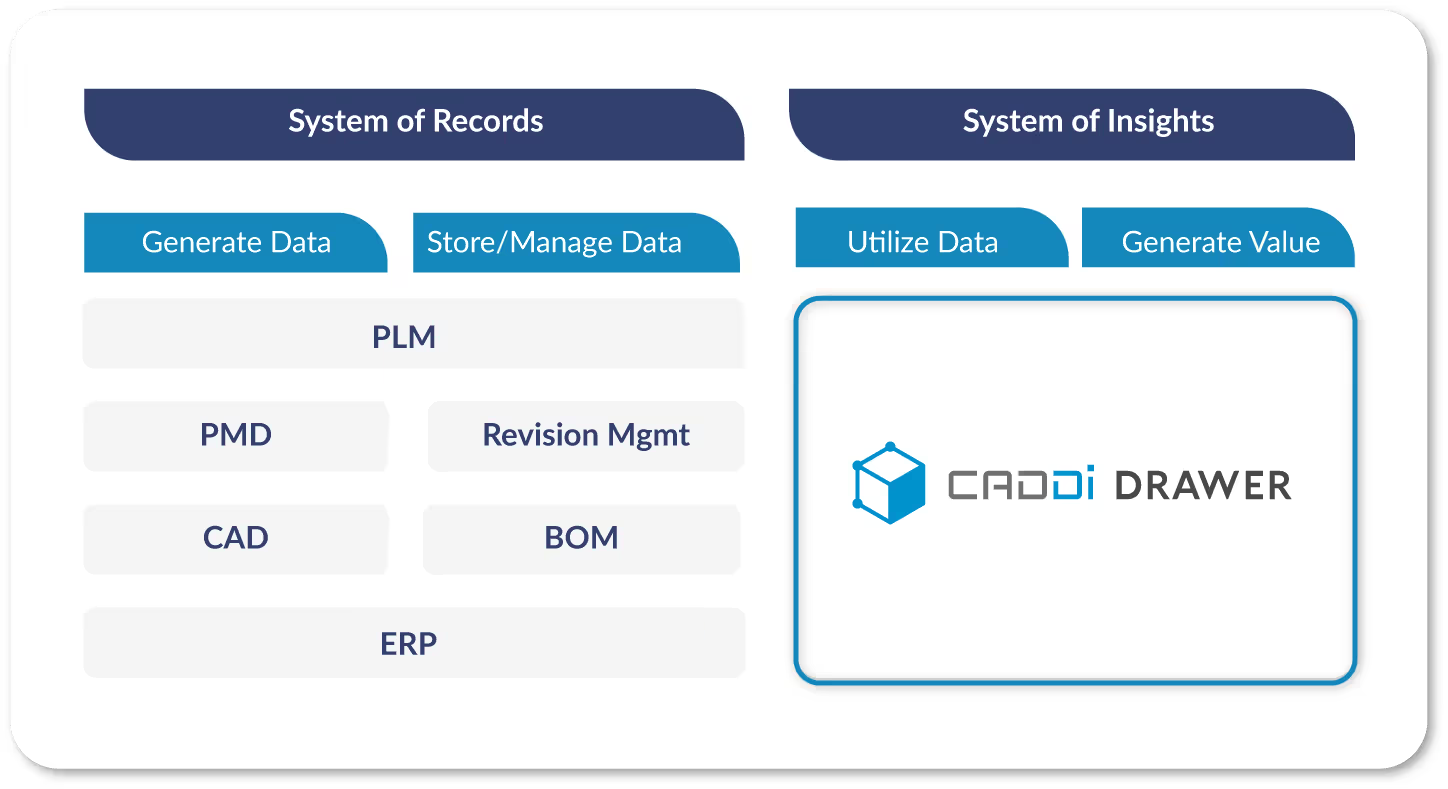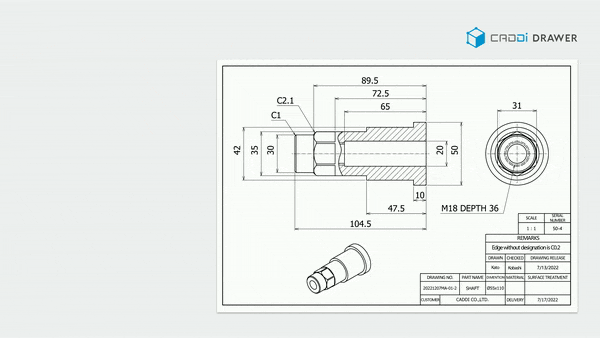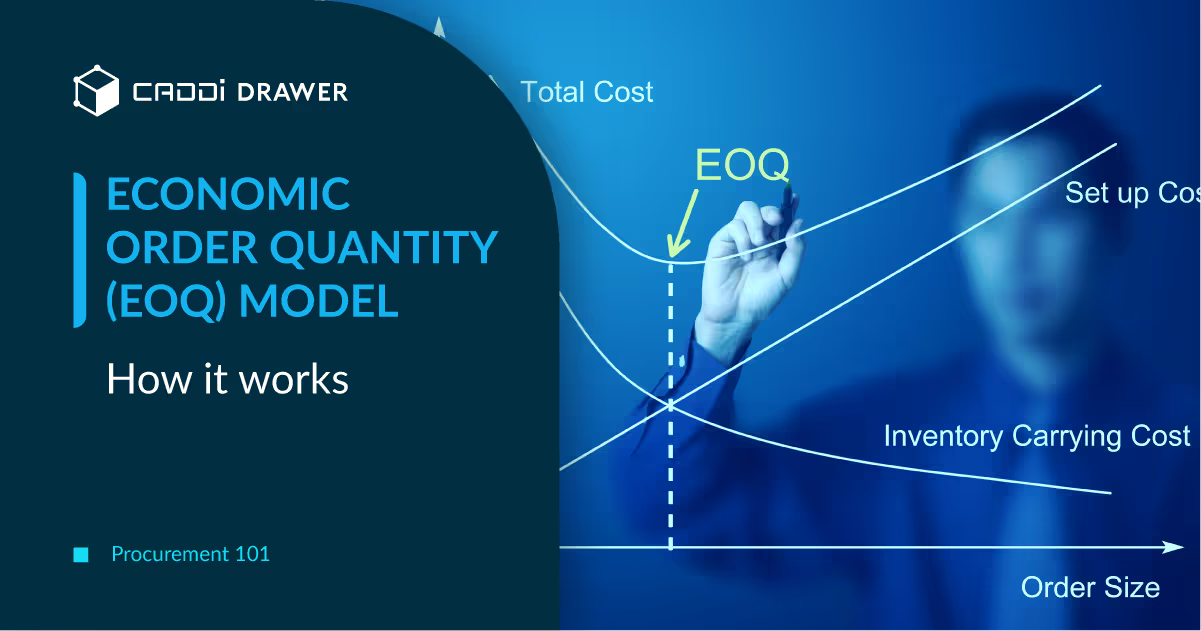The Best Procurement Analytics Tools You Should Leverage in 2024

Table of Contents

As organizations strive for efficiency and cost savings, the ability to analyze and interpret procurement data using procurement analytics has become a key differentiator.
The global procurement analytics market is expanding rapidly. This reflects the growing recognition of analytics as essential tools for informed decision-making. These tools don't just identify opportunities for cost reduction and efficiency improvements. They also enable innovation within procurement functions.
However, the real challenge lies in effectively utilizing the vast amounts of data to drive strategic decisions that align with overarching business objectives.
What is procurement analytics?
Procurement analytics refers to the systematic analysis of spend data, supplier performance, market trends, and procurement operations. Your goal is to derive actionable insights for informed decision-making. Here’s a closer look at the categories of procurement analytics:
Spend Analysis: Examining procurement spend to identify cost-saving opportunities and improve budget efficiency. It’s crucial because it enables organizations to gain visibility into their spending patterns, uncover inefficiencies, and ensure compliance with procurement policies.
Companies can leverage spend analysis by implementing tools that aggregate and categorize spend data. This allows for the identification of savings opportunities and the optimization of procurement strategies.
Supplier and Supply Chain Analysis: This focuses on assessing supplier relationships and supply chain risks to enhance resilience and performance. Given today’s complex global supply networks, understanding supplier capability and risks is essential for maintaining supply chain continuity and preventing disruptions.
Leveraging this analysis involves using tools that evaluate supplier performance, assess risk levels, and provide insights into supply chain vulnerabilities, enabling procurement teams to make informed decisions about supplier management and risk mitigation.
Market Analysis: This entails analyzing market conditions, trends, and price movements to inform procurement strategies. Market analysis is important because it helps procurement professionals understand the external factors affecting supply and demand, enabling them to anticipate market changes and negotiate better terms with suppliers.
Tools that offer real-time market intelligence and predictive analytics can be used to gauge market trends, forecast price changes, and identify the optimal timing for procurement actions.
Procurement Operation Analysis: This analyzes the efficiency and effectiveness of procurement operations from quotation to payment. Streamlining procurement processes is key to reducing cycle times, minimizing errors, and enhancing overall procurement efficiency.
Organizations can leverage procurement operation analysis by adopting e-procurement systems that automate and monitor the procurement workflow, providing insights into process bottlenecks and opportunities for improvement.
Advanced Analytics: Utilizing AI and machine learning, advanced analytics offer insights difficult for people to discover and strategic foresight in procurement. Advanced analytics are increasingly important as they enable procurement teams to forecast demand, optimize pricing, and identify future procurement trends without spendin extensive time on manual analysis.
By integrating AI and machine learning tools into their procurement systems, companies can predict future trends, enhance decision-making, and stay ahead of market shifts.
Key procurement analytics software
1. Spend Analysis and Procurement Intelligence Tools
Spend analysis and procurement intelligence tools scrutinize procurement spend data to unearth cost-saving opportunities and enforce policy compliance. These tools tackle the complexity of spend data across categories, identifying uncovering potential savings. By aggregating and categorizing spend data, these tools offer visibility that enables procurement leaders to make informed decisions.
Coupa Spend Analysis
- Pros: Offers deep visibility into spend data, enabling users to identify savings opportunities quickly.
- Cons: Integration with legacy systems can be challenging.
- Case Study: A multinational corporation implemented Coupa to centralize its procurement data, resulting in a 15% reduction in unmanaged spend within the first year.
SpendHQ
- Pros: Provides detailed insights into spend analytics with a user-friendly interface.
- Cons: Can be cost-prohibitive for smaller businesses.
- Case Study: By deploying SpendHQ, a Fortune 500 company managed to identify over $20 million in savings opportunities across various spend categories.
CADDi Drawer
- Pros: Integrates seamlessly with existing procurement systems, providing real-time analytics and insights.
- Cons: There may be a learning curve for users unfamiliar with the analytics platform.
- Case Study: An engineering firm utilized CADDi Drawer to streamline its procurement process, resulting in a 10% decrease in procurement costs and a significant reduction in procurement cycle time.
2. Supplier and Supply Chain Analysis Tools
These tools evaluate supplier performance and assess risks, enhancing supply chain resilience. Managing supplier risks, ensuring performance standards, and improving supply chain visibility. By offering detailed insights into supplier performance and risk profiles, these tools help procurement teams to strategize effectively.
Jaggaer Direct
- Pros: Offers comprehensive supplier management features, including performance tracking and risk assessment.
- Cons: Complexity and cost may be barriers for smaller organizations.
- Case Study: Utilizing Jaggaer Direct, a global manufacturing company enhanced its supplier risk management process, improving supplier reliability by 25%.
SAP Ariba Supplier Risk
- Pros: Integrates with SAP’s ecosystem, providing extensive risk assessment capabilities.
- Cons: Full functionality requires integration with SAP systems, which may be a limitation for non-SAP users.
- Case Study: A pharmaceutical company implemented SAP Ariba for supplier risk management, successfully mitigating potential disruptions during the COVID-19 pandemic.
CADDi Drawer
- Pros: Streamlines the evaluation of supplier performance and integrates risk management tools.
- Cons: Primarily focuses on manufacturing and engineering sectors, which may limit its applicability for some industries.
- Case Study: Leveraging CADDi Drawer, an automotive manufacturer optimized its supplier selection process, reducing lead times by 20% and enhancing supply chain resilience.
3. Market Analysis Tools
Market analysis tools provide insights into market conditions, trends, and pricing, informing procurement strategies. Adapting to market volatility, price trends, and sourcing strategies. These tools enable procurement professionals to stay ahead of market shifts, ensuring competitive procurement practices.
Mintec Analytics
- Pros: Delivers extensive commodity price data and market intelligence.
- Cons: The wealth of information provided can be overwhelming for new users.
- Case Study: A food and beverage company utilized Mintec Analytics to navigate raw material price volatility, locking in prices at optimal times to save millions annually.
ProcurementIQ
- Pros: Offers detailed market reports and insights, aiding category management.
- Cons: Access to full insights requires a subscription, which may be a barrier for some organizations.
- Case Study: Through ProcurementIQ, a retail chain gained insights into market trends for essential commodities, enhancing its negotiation leverage with suppliers and achieving a 5% reduction in procurement costs.
4. E-Procurement and Procurement Operations Tools
These procurement analytics platforms automate procurement operations, from requisition to payment, streamlining processes. Reducing procurement cycle times, minimizing errors, and improving operational efficiency. By automating and providing analytics on procurement operations, these systems enhance transparency and efficiency.
SAP Ariba Buying
- Pros: Facilitates a comprehensive e-procurement solution that supports global procurement operations with robust analytics and automation.
- Cons: The complexity of integration and operation can be a challenge for teams not already familiar with SAP products.
- Case Study: A leading technology firm implemented SAP Ariba Buying, streamlining its procurement process, which led to a 30% reduction in procurement cycle times and a significant improvement in compliance rates.
Oracle Procurement Cloud
- Pros: Offers a cloud-based solution that integrates with the broader Oracle suite for enhanced procurement operations and analytics.
- Cons: To achieve full functionality, additional Oracle modules may be required, increasing the total cost of ownership.
- Case Study: By adopting Oracle Procurement Cloud, a healthcare organization managed to automate its end-to-end procurement processes, resulting in a 40% increase in process efficiency and a 20% cost savings on procurement operations.
Fairmarkit
- Pros: Fairmarkit automates sourcing for all spend categories, allowing procurement teams to engage early, automate repetitive tasks, and build strategic processes. It promises savings per buyer, reduces average sourcing time, and ensures competitive bids. Its platform supports seamless integration with major ERP and P2P systems.
- Cons: Specific challenges or limitations were not highlighted, but like any platform, the extent of benefits realized can depend on the organization’s specific needs, existing systems, and ability to adopt new technologies effectively.
- Case Study: Companies like bp and Refinitiv have seen significant improvements after implementing Fairmarkit. bp noted it as a significant digital platform disrupting procurement processes, inspiring the search for similar innovations. Refinitiv achieved its ROI target within six months, realizing savings on tail spend that substantially exceeded costs
5. Advanced Procurement Analytics and Predictive Tools
Leveraging AI and machine learning, these procurement analytics tools provide predictive insights, demand forecasting, and pricing optimization. Anticipating future trends, optimizing procurement pricing, and improving demand planning. Through the use of advanced algorithms and data models, these tools offer foresight and strategic planning capabilities that traditional analytics methods cannot.
GEP SMART™
- Pros: Integrates AI-driven insights with a comprehensive procurement suite, offering predictive analytics and optimization tools.
- Cons: Primarily suited for large enterprises, which may present a barrier to small and medium-sized businesses.
- Case Study: An international consumer goods company utilized GEP SMART™ for its demand forecasting capabilities, which helped to reduce inventory costs by 15% while maintaining high service levels.
Jaggaer Analytics
- Pros: Provides deep analytical capabilities with customizable dashboards and reports for detailed procurement insights.
- Cons: The platform’s extensive features can require a significant setup time and learning curve for users.
- Case Study: Leveraging Jaggaer Analytics, a university improved its procurement strategy, enabling a 25% improvement in budget allocation and a 10% reduction in overall procurement costs.
CADDi Drawer
- Pros: Offers advanced predictive analytics within an easy-to-integrate platform, enhancing decision-making and operational efficiency.
- Cons: Its specialized focus on specific industries means it might not be the best fit for every company’s needs.
- Case Study: A manufacturing company adopted CADDi Drawer to optimize its procurement strategy, utilizing its predictive analytics to forecast material needs accurately, which led to a 20% reduction in inventory holding costs and improved supplier negotiation strategies.
Challenges in procurement analytics
In the realm of procurement analytics, the ability to not only gather but also effectively analyze and leverage both structured and unstructured data is pivotal for achieving success.
Structured data forms the backbone of traditional analytics. Although it’s not so easy to find relevant structured data in systems commonly used, it’s still searchable. And, the vast majority of essential data including information on drawings is unstructured and not searchable usually. This presents significant challenges in analysis with data.
The importance of incorporating unstructured data into procurement analytics cannot be overstated. It provides deeper insights. For instance, detailed specifications and conditions outlined in drawings or contracts offer invaluable implications into supplier requirements, quality standards, and potential areas for cost savings or efficiency improvements.
By analyzing this unstructured data, you can uncover hidden patterns, trends, and opportunities that structured data alone might not reveal.
Bridging the Gap with CADDi Drawer
This is where CADDi Drawer distinguishes itself as a revolutionary tool in the procurement landscape. Unlike traditional System of Record (SoR) tools that primarily focus on managing and storing structured data, CADDi Drawer operates as a System of Insight (SoI).

It has the unique capability to automatically convert unstructured data on drawings into structured data, making it accessible and analyzable alongside traditional structured data sources. This capability allows CADDi Drawer to offer comprehensive insights that were previously unattainable.

By turning drawings and other unstructured data into structured formats, CADDi Drawer enables procurement teams to perform deep analytics on a wider array of data points. This capability opens up a multitude of opportunities for insights, from identifying non-obvious cost drivers in the supply chain to uncovering efficiencies in product specifications or procurement processes.
As organizations strive for efficiency and cost savings, the ability to analyze and interpret procurement data using procurement analytics has become a key differentiator.
The global procurement analytics market is expanding rapidly. This reflects the growing recognition of analytics as essential tools for informed decision-making. These tools don't just identify opportunities for cost reduction and efficiency improvements. They also enable innovation within procurement functions.
However, the real challenge lies in effectively utilizing the vast amounts of data to drive strategic decisions that align with overarching business objectives.
What is procurement analytics?
Procurement analytics refers to the systematic analysis of spend data, supplier performance, market trends, and procurement operations. Your goal is to derive actionable insights for informed decision-making. Here’s a closer look at the categories of procurement analytics:
Spend Analysis: Examining procurement spend to identify cost-saving opportunities and improve budget efficiency. It’s crucial because it enables organizations to gain visibility into their spending patterns, uncover inefficiencies, and ensure compliance with procurement policies.
Companies can leverage spend analysis by implementing tools that aggregate and categorize spend data. This allows for the identification of savings opportunities and the optimization of procurement strategies.
Supplier and Supply Chain Analysis: This focuses on assessing supplier relationships and supply chain risks to enhance resilience and performance. Given today’s complex global supply networks, understanding supplier capability and risks is essential for maintaining supply chain continuity and preventing disruptions.
Leveraging this analysis involves using tools that evaluate supplier performance, assess risk levels, and provide insights into supply chain vulnerabilities, enabling procurement teams to make informed decisions about supplier management and risk mitigation.
Market Analysis: This entails analyzing market conditions, trends, and price movements to inform procurement strategies. Market analysis is important because it helps procurement professionals understand the external factors affecting supply and demand, enabling them to anticipate market changes and negotiate better terms with suppliers.
Tools that offer real-time market intelligence and predictive analytics can be used to gauge market trends, forecast price changes, and identify the optimal timing for procurement actions.
Procurement Operation Analysis: This analyzes the efficiency and effectiveness of procurement operations from quotation to payment. Streamlining procurement processes is key to reducing cycle times, minimizing errors, and enhancing overall procurement efficiency.
Organizations can leverage procurement operation analysis by adopting e-procurement systems that automate and monitor the procurement workflow, providing insights into process bottlenecks and opportunities for improvement.
Advanced Analytics: Utilizing AI and machine learning, advanced analytics offer insights difficult for people to discover and strategic foresight in procurement. Advanced analytics are increasingly important as they enable procurement teams to forecast demand, optimize pricing, and identify future procurement trends without spendin extensive time on manual analysis.
By integrating AI and machine learning tools into their procurement systems, companies can predict future trends, enhance decision-making, and stay ahead of market shifts.
Key procurement analytics software
1. Spend Analysis and Procurement Intelligence Tools
Spend analysis and procurement intelligence tools scrutinize procurement spend data to unearth cost-saving opportunities and enforce policy compliance. These tools tackle the complexity of spend data across categories, identifying uncovering potential savings. By aggregating and categorizing spend data, these tools offer visibility that enables procurement leaders to make informed decisions.
Coupa Spend Analysis
- Pros: Offers deep visibility into spend data, enabling users to identify savings opportunities quickly.
- Cons: Integration with legacy systems can be challenging.
- Case Study: A multinational corporation implemented Coupa to centralize its procurement data, resulting in a 15% reduction in unmanaged spend within the first year.
SpendHQ
- Pros: Provides detailed insights into spend analytics with a user-friendly interface.
- Cons: Can be cost-prohibitive for smaller businesses.
- Case Study: By deploying SpendHQ, a Fortune 500 company managed to identify over $20 million in savings opportunities across various spend categories.
CADDi Drawer
- Pros: Integrates seamlessly with existing procurement systems, providing real-time analytics and insights.
- Cons: There may be a learning curve for users unfamiliar with the analytics platform.
- Case Study: An engineering firm utilized CADDi Drawer to streamline its procurement process, resulting in a 10% decrease in procurement costs and a significant reduction in procurement cycle time.
2. Supplier and Supply Chain Analysis Tools
These tools evaluate supplier performance and assess risks, enhancing supply chain resilience. Managing supplier risks, ensuring performance standards, and improving supply chain visibility. By offering detailed insights into supplier performance and risk profiles, these tools help procurement teams to strategize effectively.
Jaggaer Direct
- Pros: Offers comprehensive supplier management features, including performance tracking and risk assessment.
- Cons: Complexity and cost may be barriers for smaller organizations.
- Case Study: Utilizing Jaggaer Direct, a global manufacturing company enhanced its supplier risk management process, improving supplier reliability by 25%.
SAP Ariba Supplier Risk
- Pros: Integrates with SAP’s ecosystem, providing extensive risk assessment capabilities.
- Cons: Full functionality requires integration with SAP systems, which may be a limitation for non-SAP users.
- Case Study: A pharmaceutical company implemented SAP Ariba for supplier risk management, successfully mitigating potential disruptions during the COVID-19 pandemic.
CADDi Drawer
- Pros: Streamlines the evaluation of supplier performance and integrates risk management tools.
- Cons: Primarily focuses on manufacturing and engineering sectors, which may limit its applicability for some industries.
- Case Study: Leveraging CADDi Drawer, an automotive manufacturer optimized its supplier selection process, reducing lead times by 20% and enhancing supply chain resilience.
3. Market Analysis Tools
Market analysis tools provide insights into market conditions, trends, and pricing, informing procurement strategies. Adapting to market volatility, price trends, and sourcing strategies. These tools enable procurement professionals to stay ahead of market shifts, ensuring competitive procurement practices.
Mintec Analytics
- Pros: Delivers extensive commodity price data and market intelligence.
- Cons: The wealth of information provided can be overwhelming for new users.
- Case Study: A food and beverage company utilized Mintec Analytics to navigate raw material price volatility, locking in prices at optimal times to save millions annually.
ProcurementIQ
- Pros: Offers detailed market reports and insights, aiding category management.
- Cons: Access to full insights requires a subscription, which may be a barrier for some organizations.
- Case Study: Through ProcurementIQ, a retail chain gained insights into market trends for essential commodities, enhancing its negotiation leverage with suppliers and achieving a 5% reduction in procurement costs.
4. E-Procurement and Procurement Operations Tools
These procurement analytics platforms automate procurement operations, from requisition to payment, streamlining processes. Reducing procurement cycle times, minimizing errors, and improving operational efficiency. By automating and providing analytics on procurement operations, these systems enhance transparency and efficiency.
SAP Ariba Buying
- Pros: Facilitates a comprehensive e-procurement solution that supports global procurement operations with robust analytics and automation.
- Cons: The complexity of integration and operation can be a challenge for teams not already familiar with SAP products.
- Case Study: A leading technology firm implemented SAP Ariba Buying, streamlining its procurement process, which led to a 30% reduction in procurement cycle times and a significant improvement in compliance rates.
Oracle Procurement Cloud
- Pros: Offers a cloud-based solution that integrates with the broader Oracle suite for enhanced procurement operations and analytics.
- Cons: To achieve full functionality, additional Oracle modules may be required, increasing the total cost of ownership.
- Case Study: By adopting Oracle Procurement Cloud, a healthcare organization managed to automate its end-to-end procurement processes, resulting in a 40% increase in process efficiency and a 20% cost savings on procurement operations.
Fairmarkit
- Pros: Fairmarkit automates sourcing for all spend categories, allowing procurement teams to engage early, automate repetitive tasks, and build strategic processes. It promises savings per buyer, reduces average sourcing time, and ensures competitive bids. Its platform supports seamless integration with major ERP and P2P systems.
- Cons: Specific challenges or limitations were not highlighted, but like any platform, the extent of benefits realized can depend on the organization’s specific needs, existing systems, and ability to adopt new technologies effectively.
- Case Study: Companies like bp and Refinitiv have seen significant improvements after implementing Fairmarkit. bp noted it as a significant digital platform disrupting procurement processes, inspiring the search for similar innovations. Refinitiv achieved its ROI target within six months, realizing savings on tail spend that substantially exceeded costs
5. Advanced Procurement Analytics and Predictive Tools
Leveraging AI and machine learning, these procurement analytics tools provide predictive insights, demand forecasting, and pricing optimization. Anticipating future trends, optimizing procurement pricing, and improving demand planning. Through the use of advanced algorithms and data models, these tools offer foresight and strategic planning capabilities that traditional analytics methods cannot.
GEP SMART™
- Pros: Integrates AI-driven insights with a comprehensive procurement suite, offering predictive analytics and optimization tools.
- Cons: Primarily suited for large enterprises, which may present a barrier to small and medium-sized businesses.
- Case Study: An international consumer goods company utilized GEP SMART™ for its demand forecasting capabilities, which helped to reduce inventory costs by 15% while maintaining high service levels.
Jaggaer Analytics
- Pros: Provides deep analytical capabilities with customizable dashboards and reports for detailed procurement insights.
- Cons: The platform’s extensive features can require a significant setup time and learning curve for users.
- Case Study: Leveraging Jaggaer Analytics, a university improved its procurement strategy, enabling a 25% improvement in budget allocation and a 10% reduction in overall procurement costs.
CADDi Drawer
- Pros: Offers advanced predictive analytics within an easy-to-integrate platform, enhancing decision-making and operational efficiency.
- Cons: Its specialized focus on specific industries means it might not be the best fit for every company’s needs.
- Case Study: A manufacturing company adopted CADDi Drawer to optimize its procurement strategy, utilizing its predictive analytics to forecast material needs accurately, which led to a 20% reduction in inventory holding costs and improved supplier negotiation strategies.
Challenges in procurement analytics
In the realm of procurement analytics, the ability to not only gather but also effectively analyze and leverage both structured and unstructured data is pivotal for achieving success.
Structured data forms the backbone of traditional analytics. Although it’s not so easy to find relevant structured data in systems commonly used, it’s still searchable. And, the vast majority of essential data including information on drawings is unstructured and not searchable usually. This presents significant challenges in analysis with data.
The importance of incorporating unstructured data into procurement analytics cannot be overstated. It provides deeper insights. For instance, detailed specifications and conditions outlined in drawings or contracts offer invaluable implications into supplier requirements, quality standards, and potential areas for cost savings or efficiency improvements.
By analyzing this unstructured data, you can uncover hidden patterns, trends, and opportunities that structured data alone might not reveal.
Bridging the Gap with CADDi Drawer
This is where CADDi Drawer distinguishes itself as a revolutionary tool in the procurement landscape. Unlike traditional System of Record (SoR) tools that primarily focus on managing and storing structured data, CADDi Drawer operates as a System of Insight (SoI).

It has the unique capability to automatically convert unstructured data on drawings into structured data, making it accessible and analyzable alongside traditional structured data sources. This capability allows CADDi Drawer to offer comprehensive insights that were previously unattainable.

By turning drawings and other unstructured data into structured formats, CADDi Drawer enables procurement teams to perform deep analytics on a wider array of data points. This capability opens up a multitude of opportunities for insights, from identifying non-obvious cost drivers in the supply chain to uncovering efficiencies in product specifications or procurement processes.
Ready to see CADDi Drawer in action? Get a personalized demo.
Subscribe to our Blog!
Related Resources












.svg)



.svg)
.svg)
.svg)


